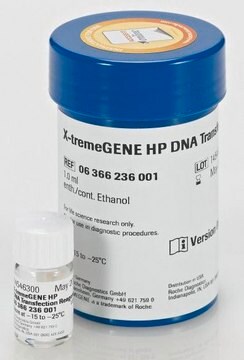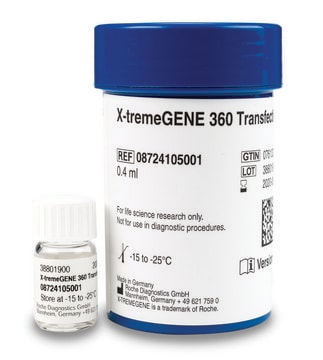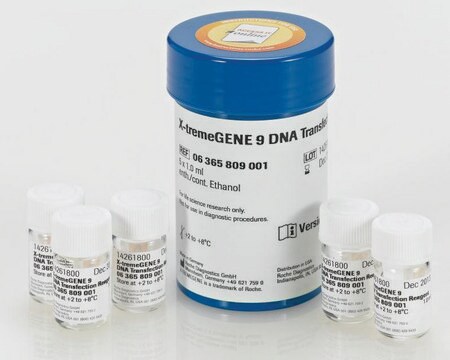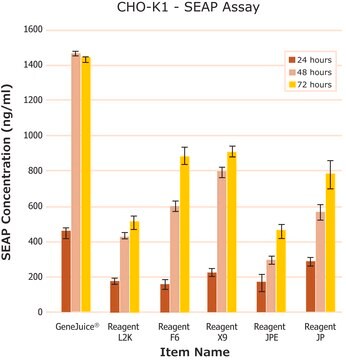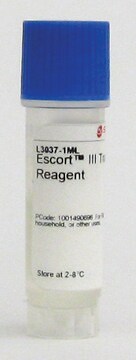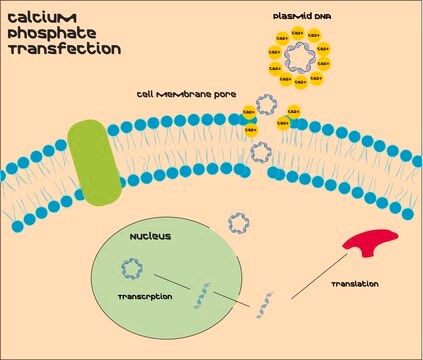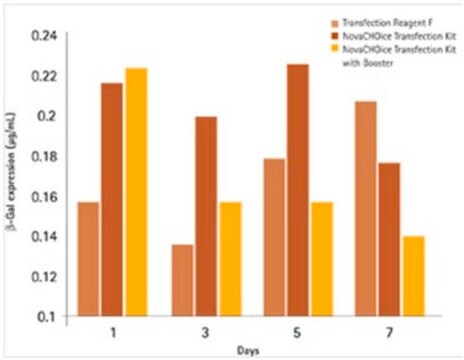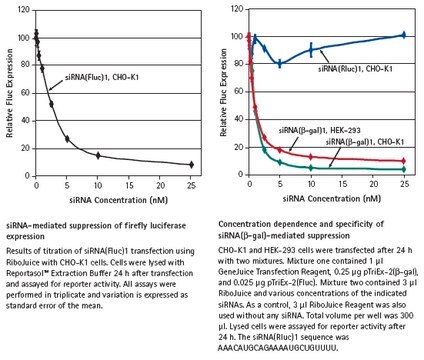L3287
Escort™ IV Transfection Reagent
Lipid reagent for transient and stable transfection of mammalian and insect cells.
Sinónimos:
Gene delivery
About This Item
Productos recomendados
grade
for molecular biology
Quality Level
form
liquid (aqueous solution)
usage
1 mL sufficient for 160-500 transfections
concentration
1 mg/mL
technique(s)
transfection: suitable
storage temp.
2-8°C
Categorías relacionadas
General description
Application
Features and Benefits
- Suitable for stable and transient transfection
- Optimized for a wide variety of cell lines
- Low toxicity
- Compatible with both serum and serum-free transfection protocols
- Ideal for Sf9, Sf21 and S2 insect cells
Components
1 mg/mL total lipid in water
Note the identity of the lipids used in Escort™ IV is confidential.
Caution
Principle
Legal Information
Related product
Storage Class
10 - Combustible liquids
wgk_germany
WGK 3
flash_point_f
Not applicable
flash_point_c
Not applicable
ppe
Eyeshields, Gloves
Elija entre una de las versiones más recientes:
¿Ya tiene este producto?
Encuentre la documentación para los productos que ha comprado recientemente en la Biblioteca de documentos.
Los clientes también vieron
Artículos
Transfection is the introduction of DNA, RNA, or proteins into eukaryotic cells and is used in research to study and modulate gene expression. Thus, transfection techniques and protocols serve as an analytical tool that facilitates the characterization of genetic functions, protein synthesis, cell growth and development.
This brief webinar provides an overview of what transfection is and the methods that are used to introduce DNA or RNA into eukaryotic cells.
Protocolos
Lipid Transfection Optimization Protocol
Escort™ III Transfection Reagent Protocol
Escort™ IV Transfection Reagent Protocol
Sigma's Universal Transfection Reagent is a unique formulation of a proprietary polymer blend used for transient and stable transfection of nucleic acids into various eukaryotic cell lines and hard-to-transfect primary cells. Fast and easy protocol is compatible with serum, serum-free medium and antibiotics
Contenido relacionado
Browse our convenient transfection reagent selection guide to match the best reagent for your specific cell line and application needs.
Nuestro equipo de científicos tiene experiencia en todas las áreas de investigación: Ciencias de la vida, Ciencia de los materiales, Síntesis química, Cromatografía, Analítica y muchas otras.
Póngase en contacto con el Servicio técnico